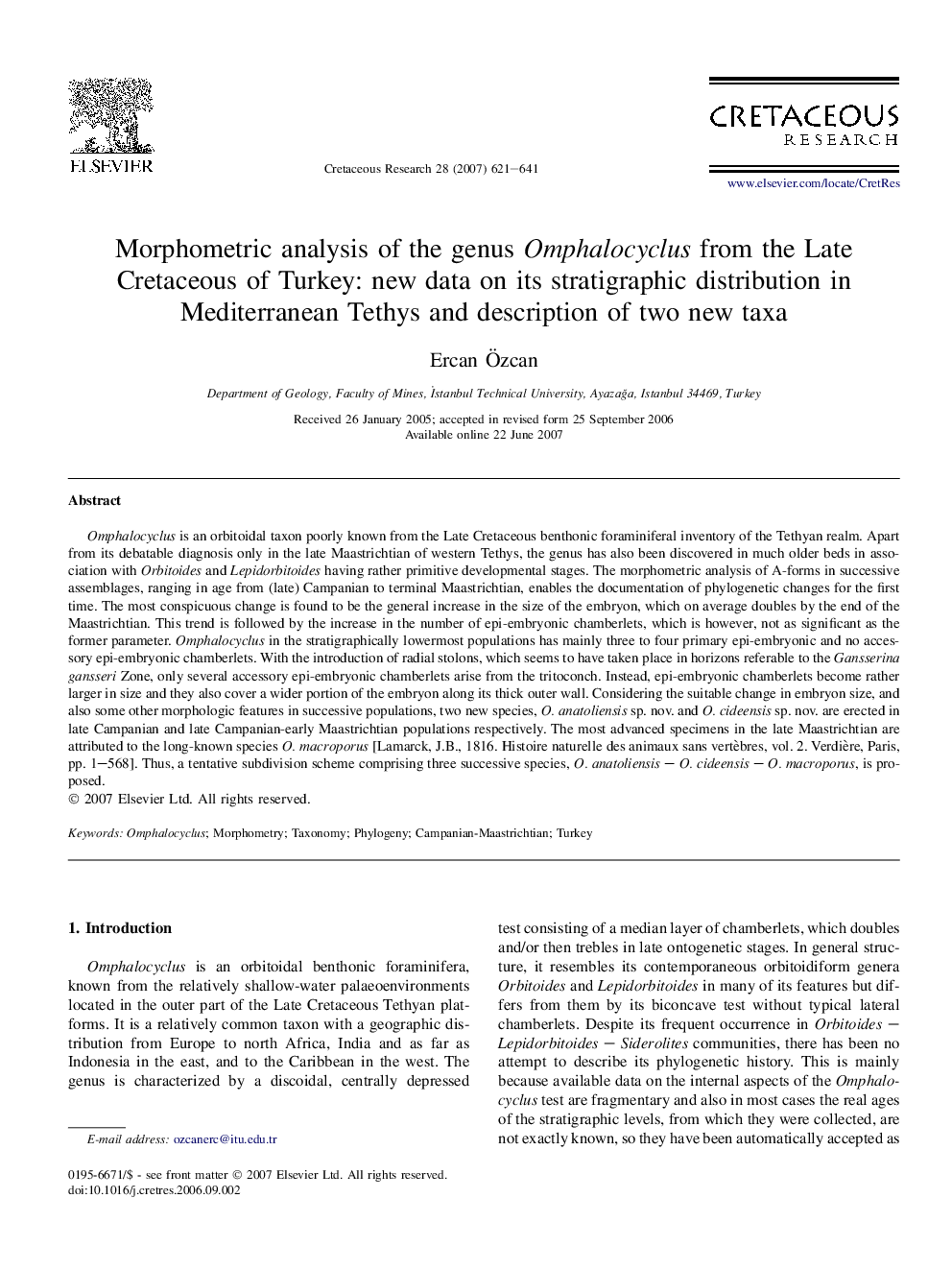| کد مقاله | کد نشریه | سال انتشار | مقاله انگلیسی | نسخه تمام متن |
|---|---|---|---|---|
| 4747340 | 1359903 | 2007 | 21 صفحه PDF | دانلود رایگان |
عنوان انگلیسی مقاله ISI
Morphometric analysis of the genus Omphalocyclus from the Late Cretaceous of Turkey: new data on its stratigraphic distribution in Mediterranean Tethys and description of two new taxa
دانلود مقاله + سفارش ترجمه
دانلود مقاله ISI انگلیسی
رایگان برای ایرانیان
کلمات کلیدی
موضوعات مرتبط
مهندسی و علوم پایه
علوم زمین و سیارات
فسیل شناسی
پیش نمایش صفحه اول مقاله

چکیده انگلیسی
Omphalocyclus is an orbitoidal taxon poorly known from the Late Cretaceous benthonic foraminiferal inventory of the Tethyan realm. Apart from its debatable diagnosis only in the late Maastrichtian of western Tethys, the genus has also been discovered in much older beds in association with Orbitoides and Lepidorbitoides having rather primitive developmental stages. The morphometric analysis of A-forms in successive assemblages, ranging in age from (late) Campanian to terminal Maastrichtian, enables the documentation of phylogenetic changes for the first time. The most conspicuous change is found to be the general increase in the size of the embryon, which on average doubles by the end of the Maastrichtian. This trend is followed by the increase in the number of epi-embryonic chamberlets, which is however, not as significant as the former parameter. Omphalocyclus in the stratigraphically lowermost populations has mainly three to four primary epi-embryonic and no accessory epi-embryonic chamberlets. With the introduction of radial stolons, which seems to have taken place in horizons referable to the Gansserina gansseri Zone, only several accessory epi-embryonic chamberlets arise from the tritoconch. Instead, epi-embryonic chamberlets become rather larger in size and they also cover a wider portion of the embryon along its thick outer wall. Considering the suitable change in embryon size, and also some other morphologic features in successive populations, two new species, O. anatoliensis sp. nov. and O. cideensis sp. nov. are erected in late Campanian and late Campanian-early Maastrichtian populations respectively. The most advanced specimens in the late Maastrichtian are attributed to the long-known species O. macroporus [Lamarck, J.B., 1816. Histoire naturelle des animaux sans vertèbres, vol. 2. Verdière, Paris, pp. 1-568]. Thus, a tentative subdivision scheme comprising three successive species, O. anatoliensis - O. cideensis - O. macroporus, is proposed.
ناشر
Database: Elsevier - ScienceDirect (ساینس دایرکت)
Journal: Cretaceous Research - Volume 28, Issue 4, August 2007, Pages 621-641
Journal: Cretaceous Research - Volume 28, Issue 4, August 2007, Pages 621-641
نویسندگان
Ercan Ãzcan,